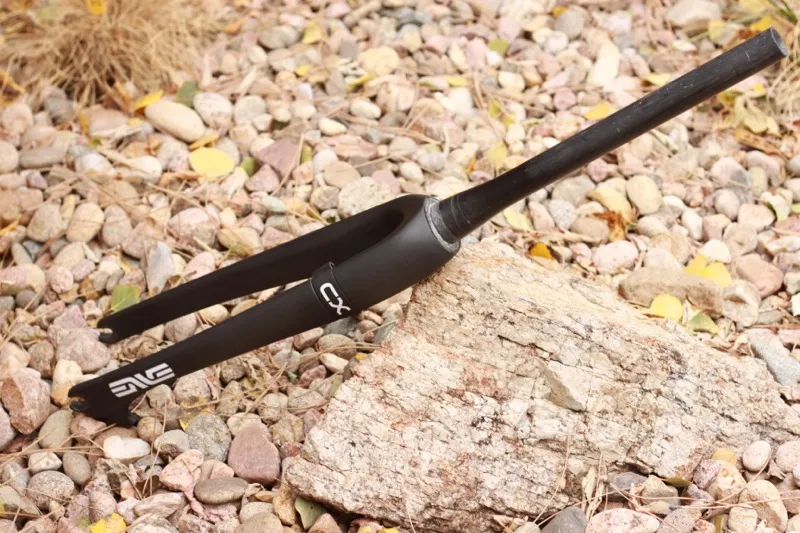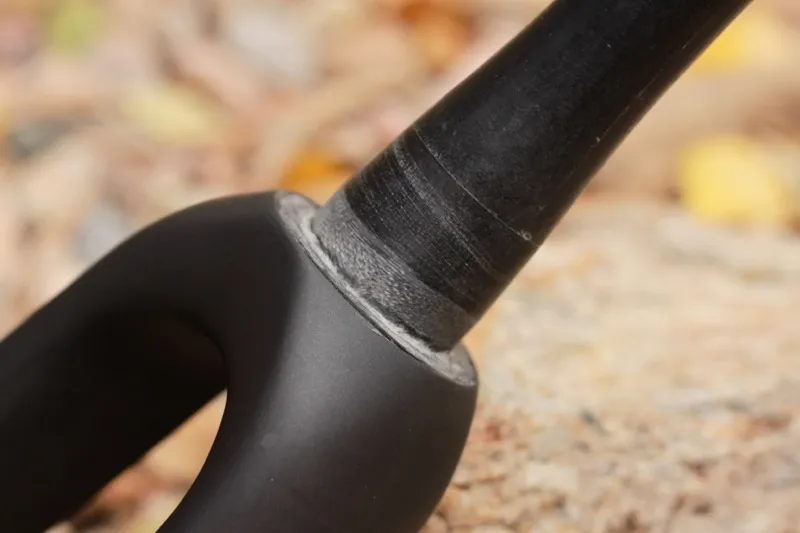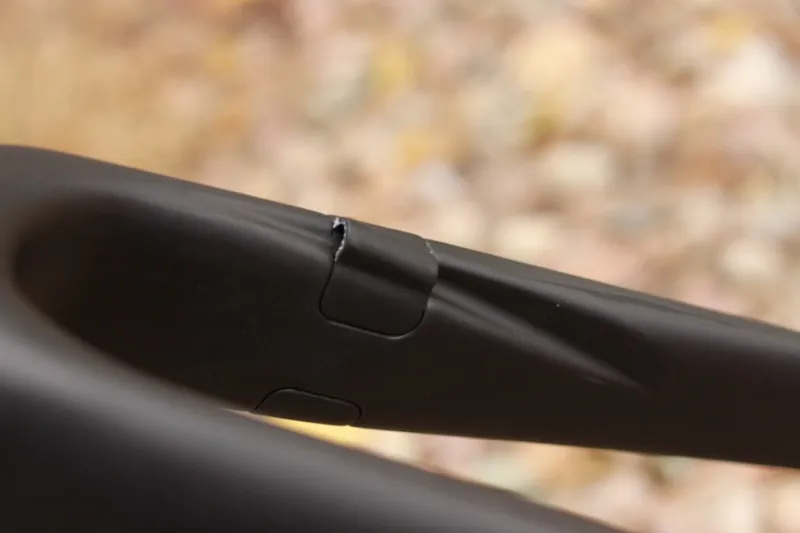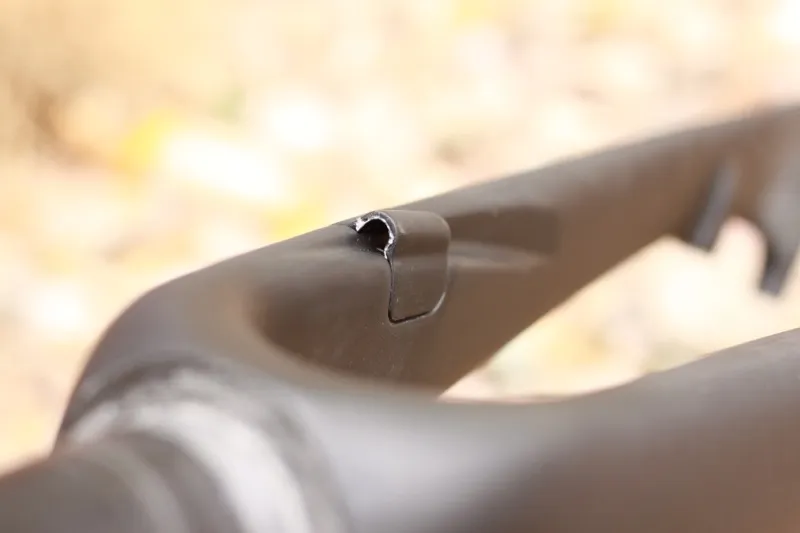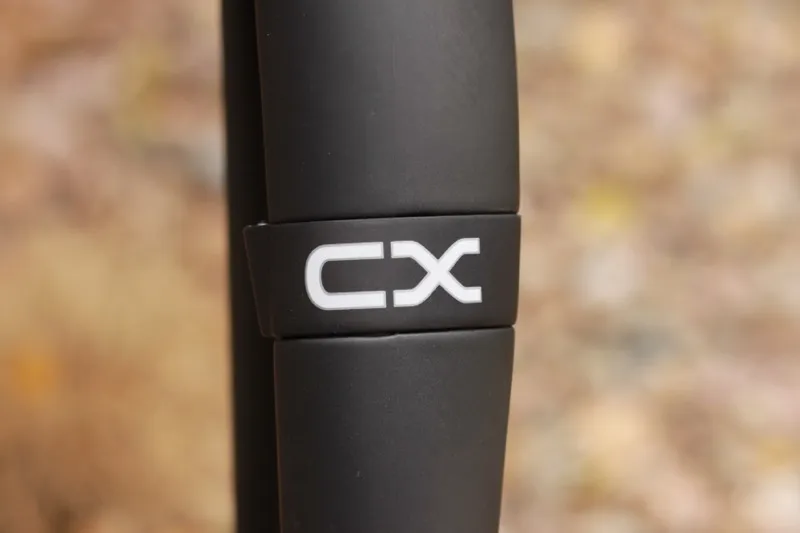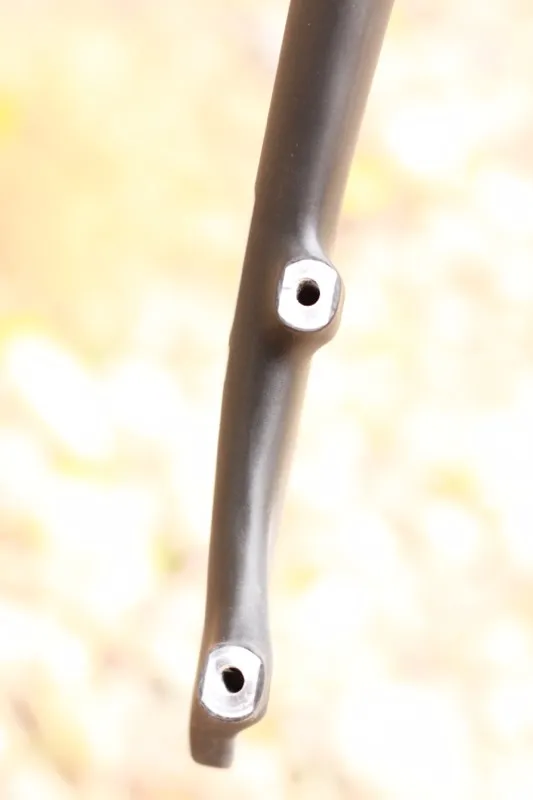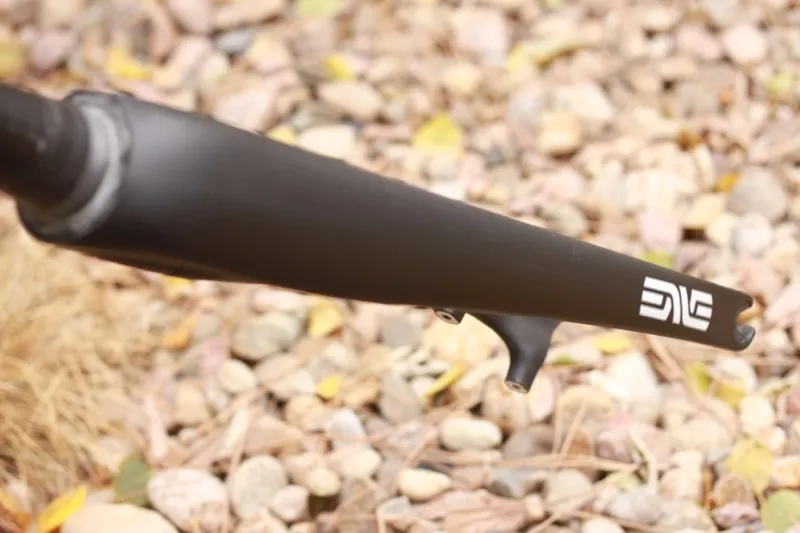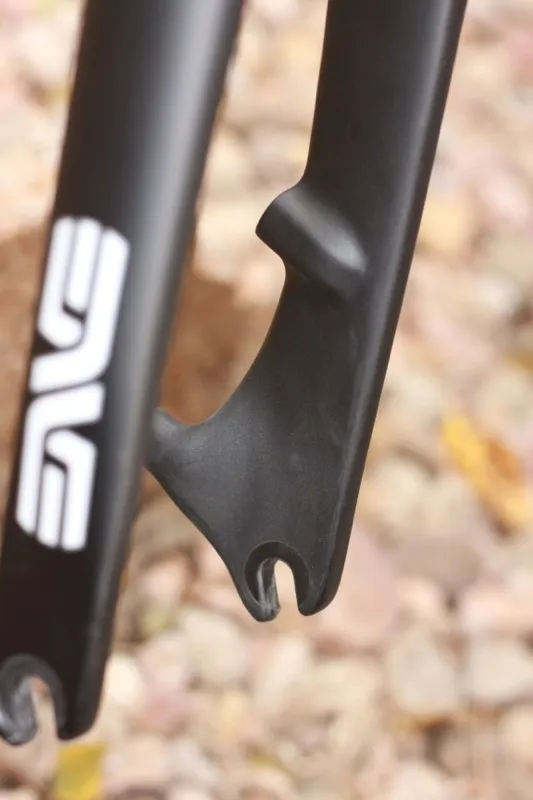Rarely do we open a package here at BikeRadar and have our socks knocked off. When we opened the box ENVE Composites sent containing their new disc-brake-specific cyclo-cross fork, our argyle woolie boolies slid right off our feet. Yep, ENVE made their fork look that good.
The Disc Cross fork hits all the same stats as ENVE's standard tapered Cross Fork, including its weight: 464g on our scale, uncut, compared to 460g (claimed) for the cantilever brake version. Geometry is also the same, with a 395mm axle-to-crown length, 47mm rake (offset) and uncut steerer tube length of 350mm.
Construction is the same as the rest of Enve's forks: a one-piece net-molded carbon structure that uses continuous fibers from dropout to the tip of the steerer. ENVE use medium-modulus, unidirectional fiber to build this superlight fork, for that material's more robust, less brittle properties.
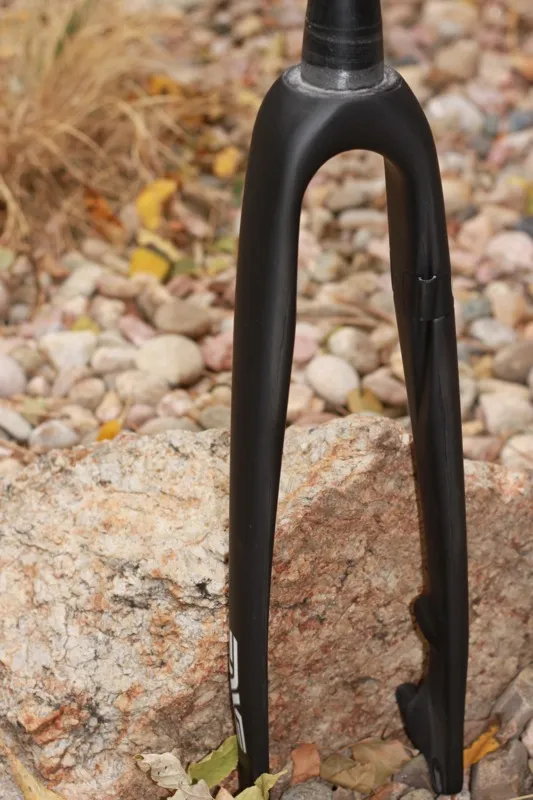
ENVE's new disc-specific cyclo-cross fork weighs just 464g with a 350mm steerer
"There are no world-beater fibers out there," ENVE's lead engineer Kevin Nelson told BikeRadar. "We tend to believe more in the standard modulus type of fibers because we feel like they're better overall performers. It's just that you have to do a little bit more research to get the bang-for-the-buck out of them. If you're looking at stiffness values and some of the other simple sort of performance metrics, you can put a stronger fiber in there and get some of that, but in the field it doesn't necessarily work as well."
Setting the ENVE design apart from many carbon forks on the market, the Disc Cross is completely hollow from roughly 25mm (1in) above the high-compression molded carbon dropouts, through the crown and steerer. ENVE also remove all of the bladders and internal molding tools used after the process is finished. The only metal in the fork is used to thread the two carbon post mounts for the brake caliper, and those are little more than fancy in-molded nuts.
Plenty of attention has been paid to the disc-specific details too. The dropouts have been angled forward to offer more security and eliminate the possibility of axle movement under braking, and the left leg has an integrated brake line clip, along with additional guide molding and a carbon snap-clip. The post mounts for the brake caliper have been spaced to accept a 160mm disc, rather than the smallest (and lightest) 140mm size.
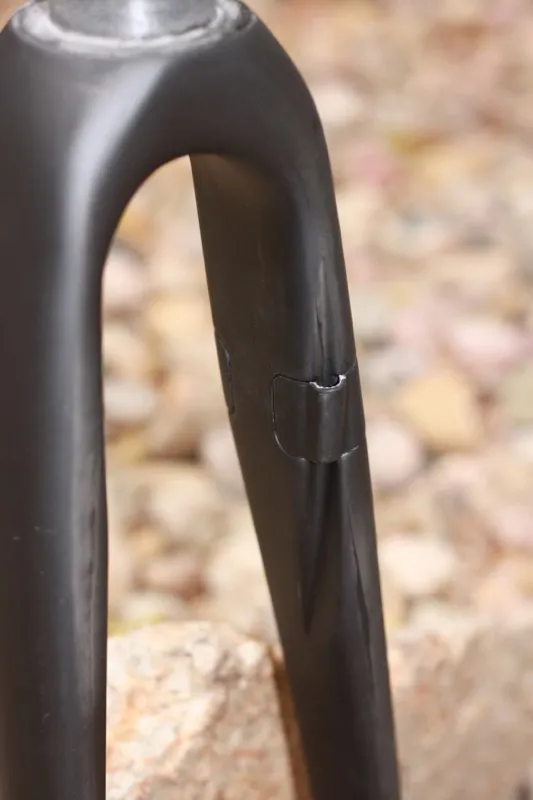
ENVE's super-slick brake line guide
"It's still in its infancy," said Nelson, with regards to ENVE's decision to go with a 160mm mount. "In our internal discussions we felt like the bigger the rotor, the more power, but more importantly, the more modulation you can get. You can change out your pads to reduce the power but you can't really do anything to increase the modulation if your disc is too small. So it was our guess at where it's [rotor sizes for 'cross bike] going to go."
The Disc Cross fork is Asian-made and will be available in late December, with a 1.5in tapered steerer only. When we first opened that black box, our main fear was that we might be holding an $800 cyclo-cross fork, but it'll actually cost US$553, the same as ENVE's non-disc 'cross forks.
That's still a lot of money but the fork is crucial to any bike's performance. "Forks are interesting, they're something that gets a little bit overlooked," Nelson said. "In the broader scheme of things, I think they kind of became a commodity item, but they're one of those things that – like a wheel – can really affect the way your whole bike rides."
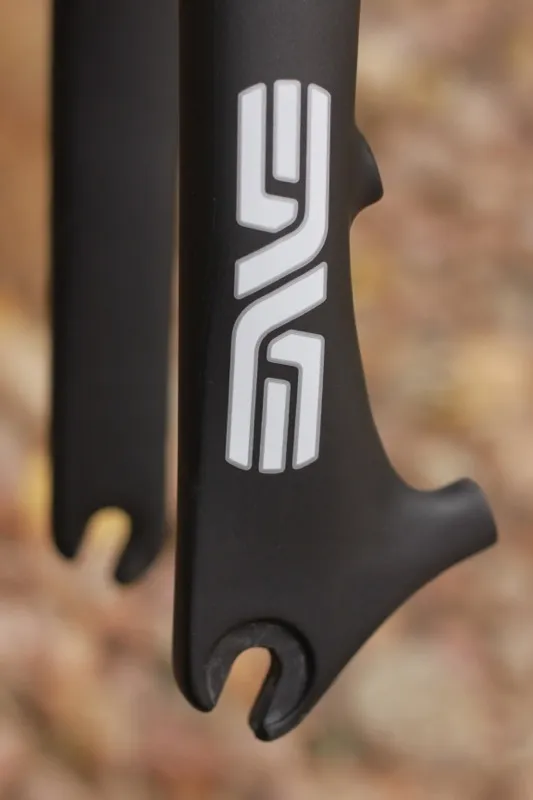
ENVEs angled dropouts and 160mm direct mount
